The destroying angel is a deadly poisonous mushroom species commonly found in North America. Due to its lethal potential, mushroom hunters and enthusiasts must know how to identify this dangerous fungus correctly. In this comprehensive guide, we will delve into the identification points, lookalikes, toxicity, habitat, and season of the destroying angel.
- Primary Eastern destroying angel species: Amanita bisporigera
- Primary Western destroying angel species: Amanita ocreata
- Common names: Destroying angel, deadly Amanita, white death cap, angel of death
- Habitat: In mixed forest woods, but may appear in mutualistic association with trees in urban or suburban areas.
- Edibility: Poisonous/Deadly
- Psychoactive properties: None
If you suspect poisoning by this mushroom, call the Poison Control Center at 1-800-222-1222 for guidance on what to do. It is extremely important that you call as soon as possible after eating it.
This article by the Poison Control Center is informative — read the True Story in their sidebar. To put it mildly, don’t mess with this species and make sure you know its lookalikes!
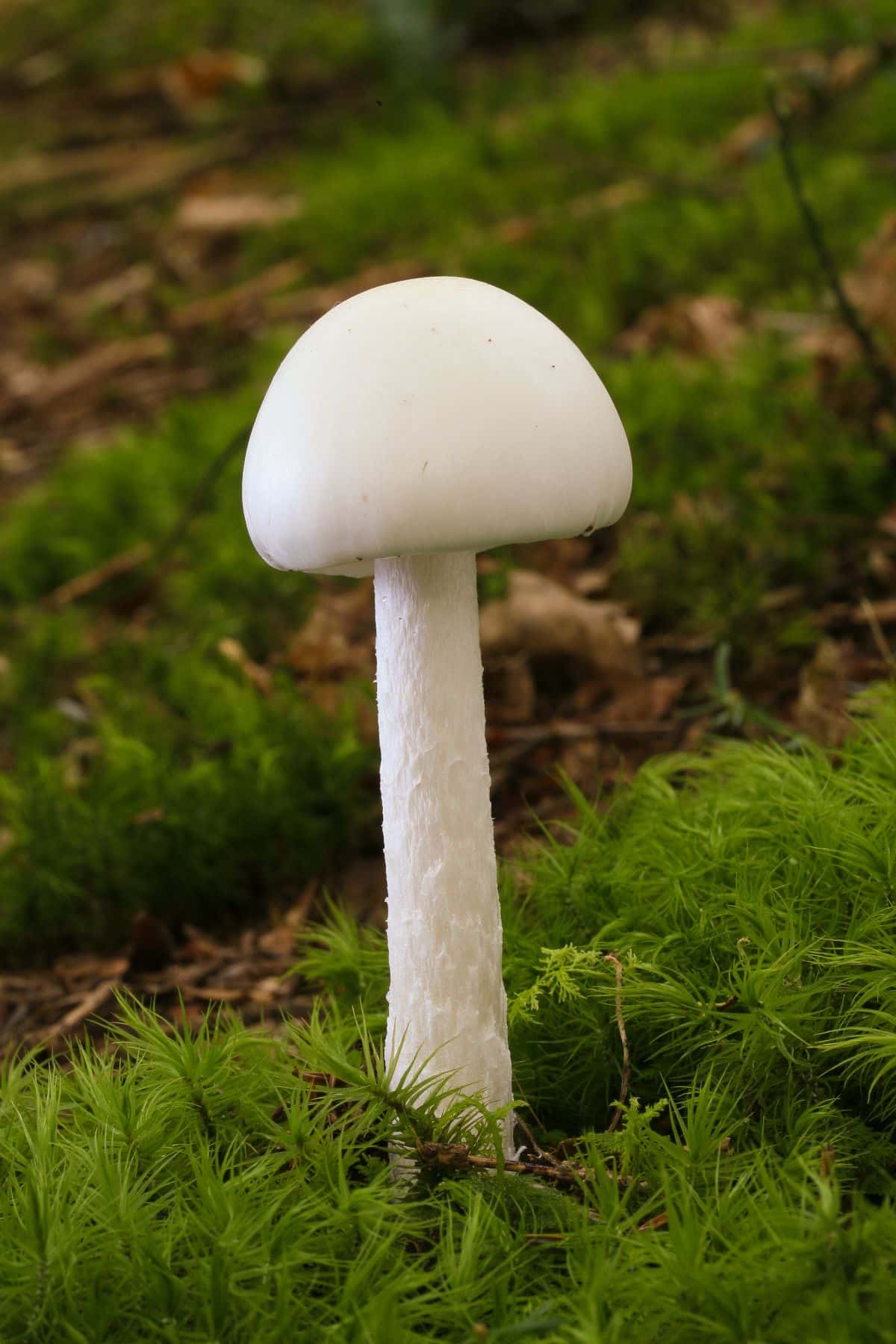
Jump to:
All About Destroying Angels
There are several species of destroying angels in North America. There is one primary west coast species and several east coast species. All of them belong to the destroying angel species group and share similar characteristics with minor differences. The west coast species is primarily differentiated by its range, which the others do not share.
In many mushroom identification books and online sources, the North American destroying angel is classified as Amanita virosa or Amanita verna. However, more recent analysis indicates that these species only occur in Europe and are separate from the North American species. There is still some debate over this, as the entire genus of destroying angels around the world still needs more research.
It’s pretty clear, however, that the majority of white death capss in North America are either Amanita bisporigera (east coast) or Amanita ocreata (west coast). And, any other species are more limited and less common. If you see the use of Amanita virosa in identification books, know that this is incorrect and should be one of the two mentioned above.
Destroying angels are Amanita mushrooms in the section Phalloideae, which includes some of the deadliest amanita mushrooms, like the death cap.

Destroying Angel Identification
Season
The fruiting bodies of the destroying angel can be found from June through November, depending on the region and local weather conditions.
Habitat
This deadly species grows on the ground in mixed woods and in grass near trees. It forms a symbiotic relationship with tree roots, helping nourish the trees while receiving nutrients in return. The mushroom grows alone or scattered or in dense groupings.
Destroying angels grow from the ground, never from trees. They may appear in urban or suburban areas, in association with specific trees, but are more common in wooded areas.
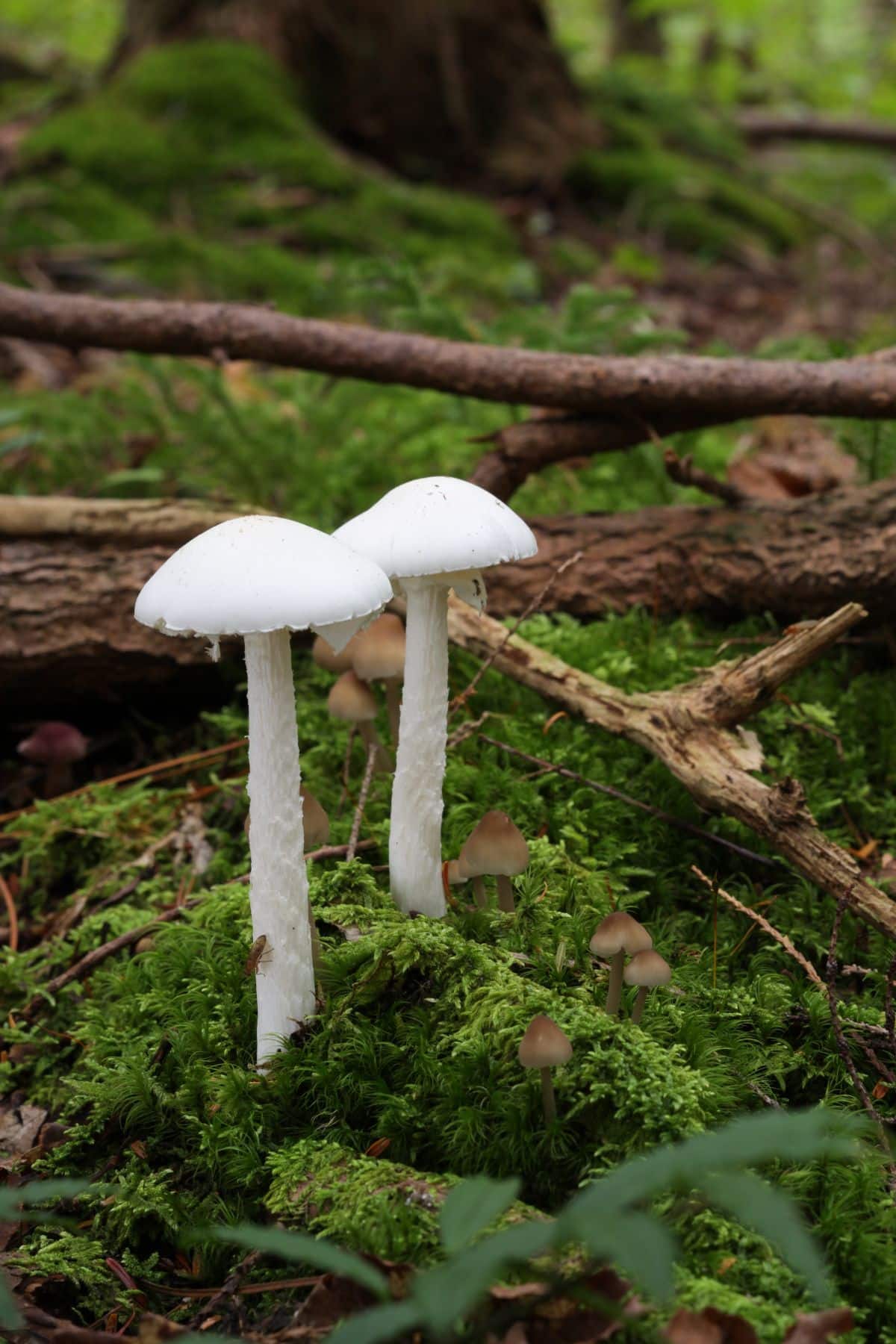
Identification
Volva (cup-like sheath)
The angel of death starts out encased in an egg-like white sac called a volva. It literally looks like a white egg buried in the soil. As the mushroom matures, the volva casing breaks apart so the cap and stalk can emerge. The volva remains at the base of the stalk, looking like a cup encircling the stem. Many times the volva cup is buried beneath the surface of the soil.
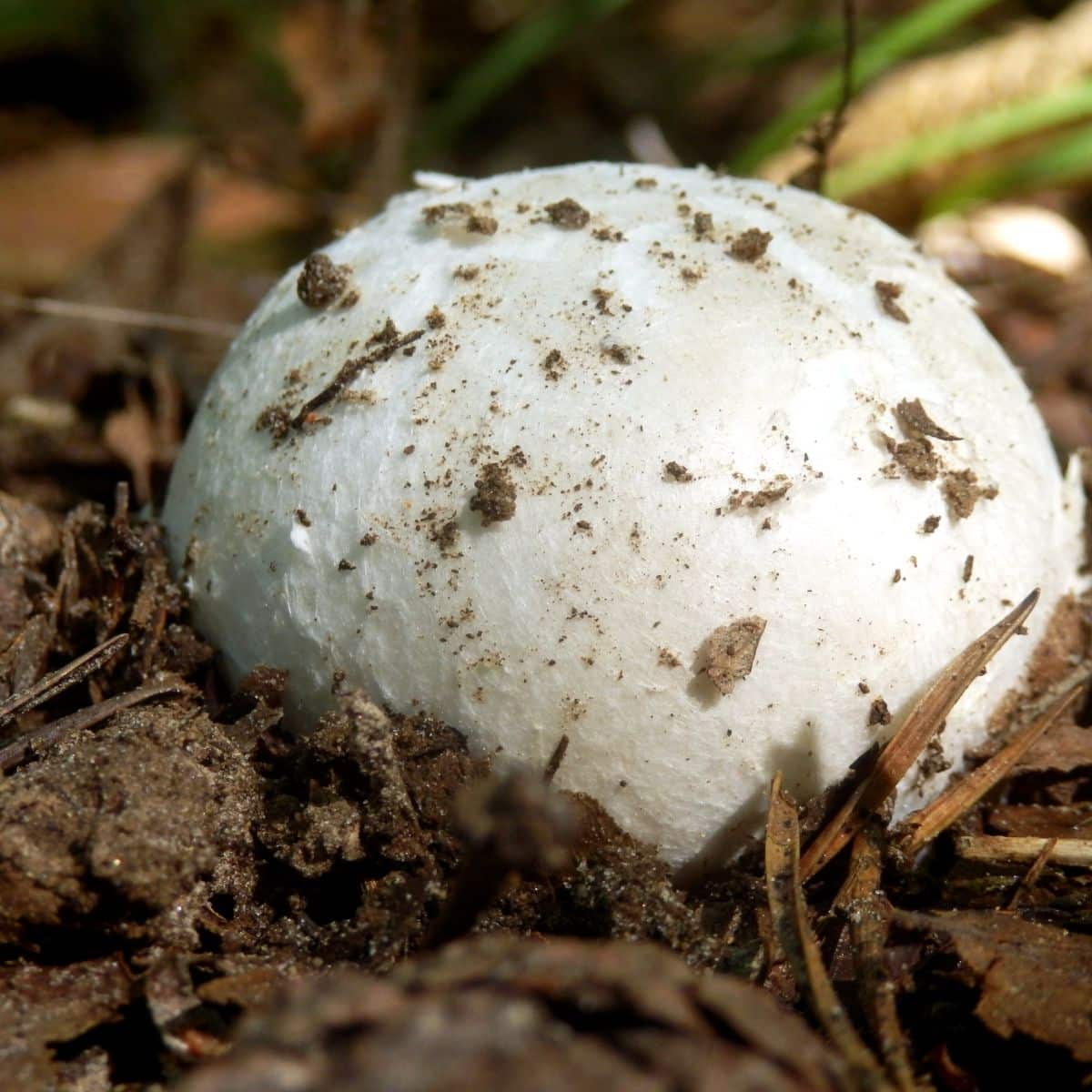

Cap
The cap is bright white, smooth, and can grow up to 4 inches across. It is initially bell-shaped, becoming broadly rounded or nearly flat as it ages. It is key to remember the cap is almost always smooth. Other species of similar-looking Amanita have flecks or warts on their caps. On occasion, the destroying angel will have flecks on its cap, remnants of the egg sac, but not usually.
The cap surface is dry but gets a little sticky when wet or humid. When young, the cap is rolled inwards. The cap edges do not have lines, a feature found with other similar species. With age, the center of the cap may discolor to a yellowish or tannish color.
Gills
The gills are white, not attached to the stalk, and so closely spaced as to look crowded. They are free from attachment to the stem.
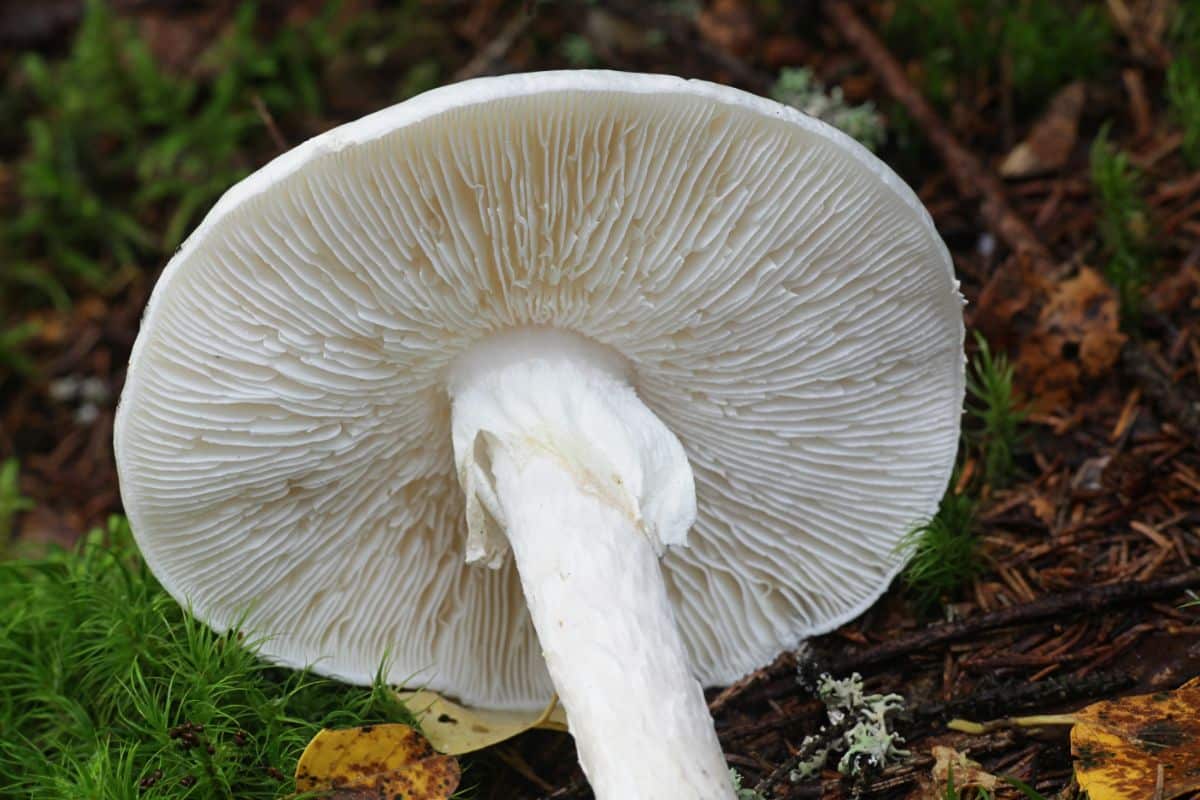
Stem
The stem is white with cottony to somewhat pearly flakes along it when young. Usually, as it ages, it loses the flaky fibrous appearance and is bald without decoration. It is thick with a bulbous base. The bulbous base is the egg-like volva that encompassed the mushroom when young. It often isn’t immediately visible, and you have to dig a little to find it.
Destroying angel’s stem measures between 2-5 inches long and has a white skirt around the upper part of it. This skirt ring is a remnant of the universal veil that surrounded the volva and is thin, hangs downwards and appears high up on the stem.
Flesh and Odor
The flesh of this mushroom is white and does not change color when cut or handled. Odor profiles vary among species of destroying angels. See the North American list below for details.
Spore print
The spore print is white.
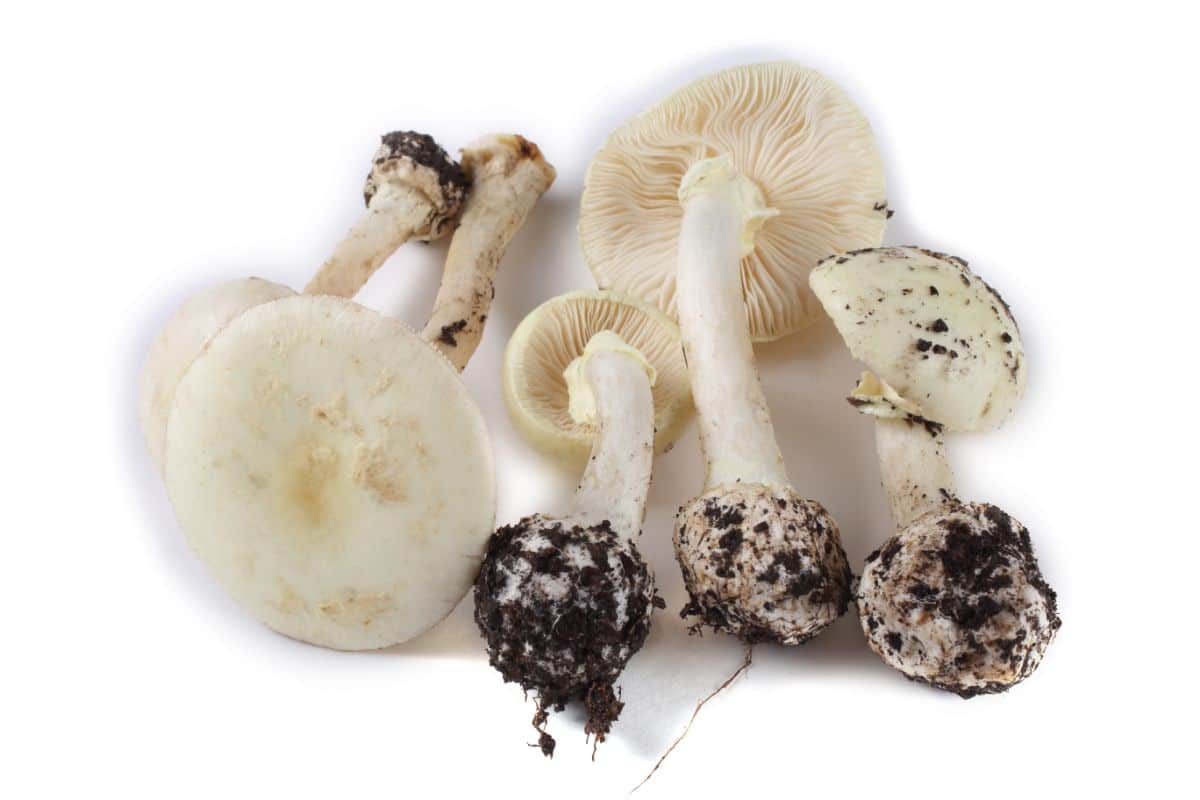
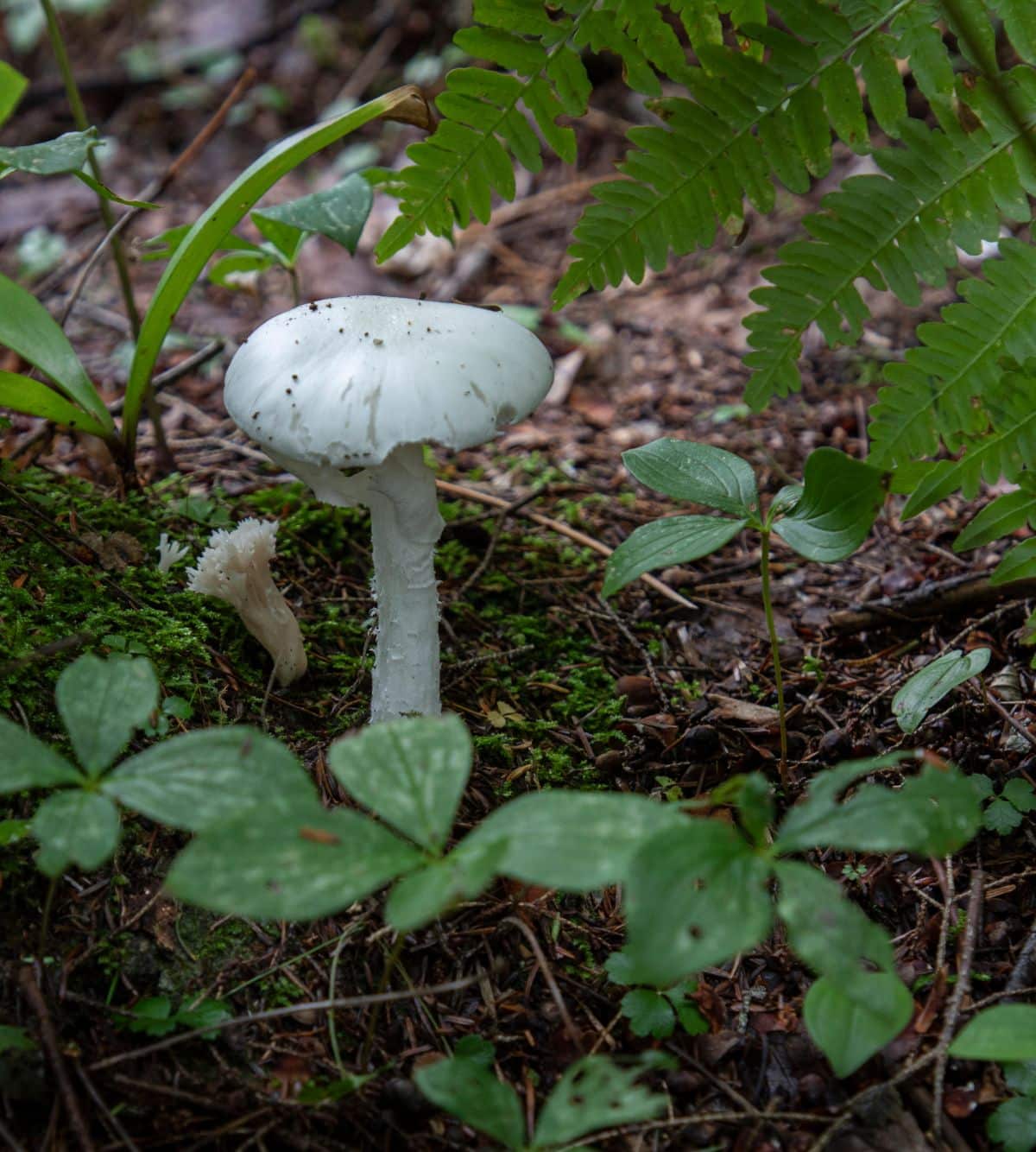
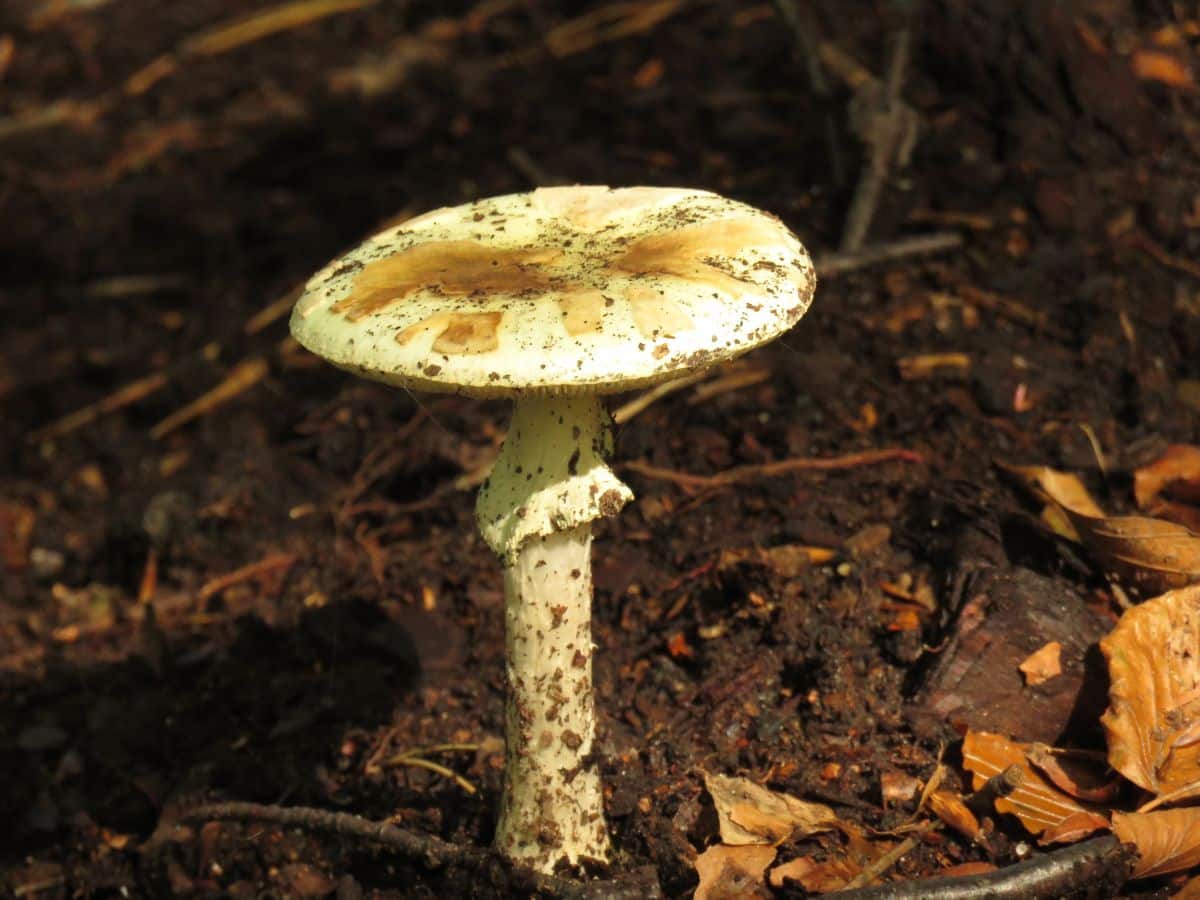
North American Destroying Angel Species
EASTERN
Eastern Destroying Angel (Amanita bisporigera)
This is the most widespread of the eastern destroying angel mushrooms. It is collected far more commonly than the other eastern species. If you’ve found a destroying angel, it is most likely this one.
- Season: Summer and fall
- Habitat: Mixed woods
- Distinguishing Characteristics: When young, this mushroom doesn’t have much of a smell. However, as it ages, it often becomes very unpleasant smelling. The odor varies but is usually described as like rotting meat or sickly sweet.
- Notes:
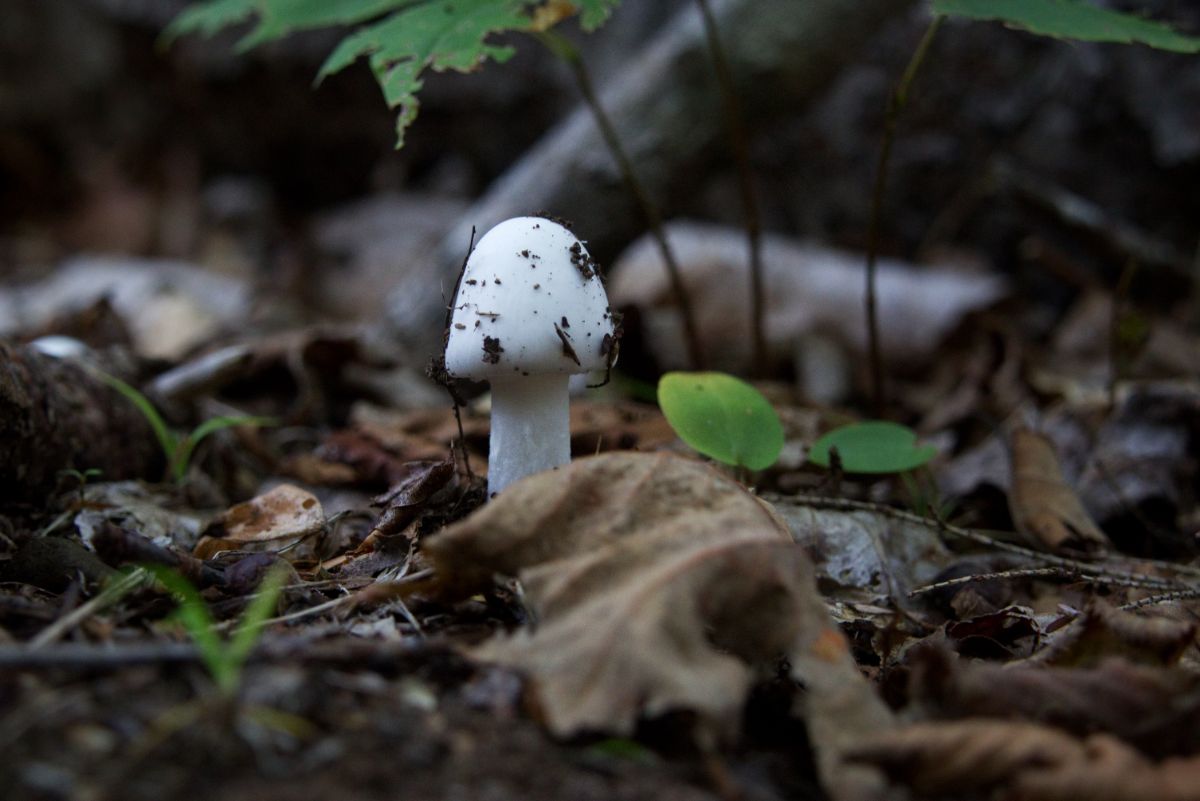
Atkinson’s Destroying Angel (Amanita elliptosperma)
- Season: Summer and fall
- Habitat: Mixed forests
- Distinguishing Characteristics: Slightly bigger than A. bisporigera. Spores are different.
- Notes: Appears widely but uncommonly across the eastern states, from southern New England to Florida and the Gulf Coast.
Pink Gilled Destroying Angel (Amanita hygroscopia)
This species may be synonymous with Atkinson’s destroying angel.
- Season: Summer and fall
- Habitat: Mixed forests, possibly preferring oak
- Distinguishing Characteristics: The gills discolor to pink or buff-pink.
- Notes: The skirt around the stem is fragile and easily disintegrates when handled. It has no distinctive smell or taste.
Great Felt-Skirt Destroying Angel (Amanita magnivelaris)
- Season: Summer through fall in the northeast and Great Lakes regions
- Habitat: Mixed forests
- Distinguishing Characteristics: The skirt around the stem is thick and felt-like – very different from the common eastern destroying angel. It may also have grooves on the upper surface.
- Notes: Smells like raw potatoes.
Narrow-Spored Destroying Angel (Amanita virosiformis)
- Season: Late spring through fall in the southeast
- Habitat: Grows with oak trees in sandy soil
- Distinguishing Characteristics: Smells strongly like rotting meat. At maturity, it develops a brownish cap center.
- Notes: Also has longer spores (for microscope analysis)
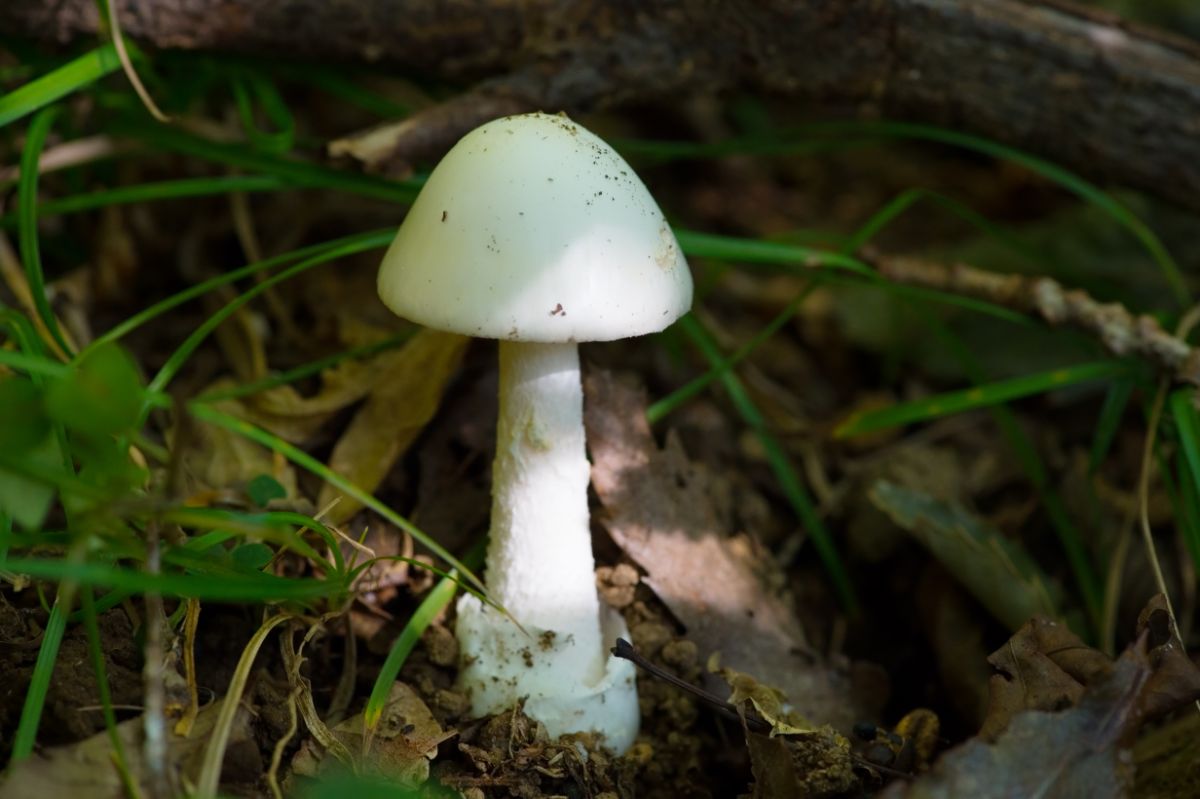
WESTERN
Death Angel (Amanita ocreata)
- Season: Late winter into spring on the West Coast and Southwest
- Habitat: Under Coast Liveoak
- Distinguishing Characteristics:
- Notes: Smells mild when young but then develops a fish-like odor.
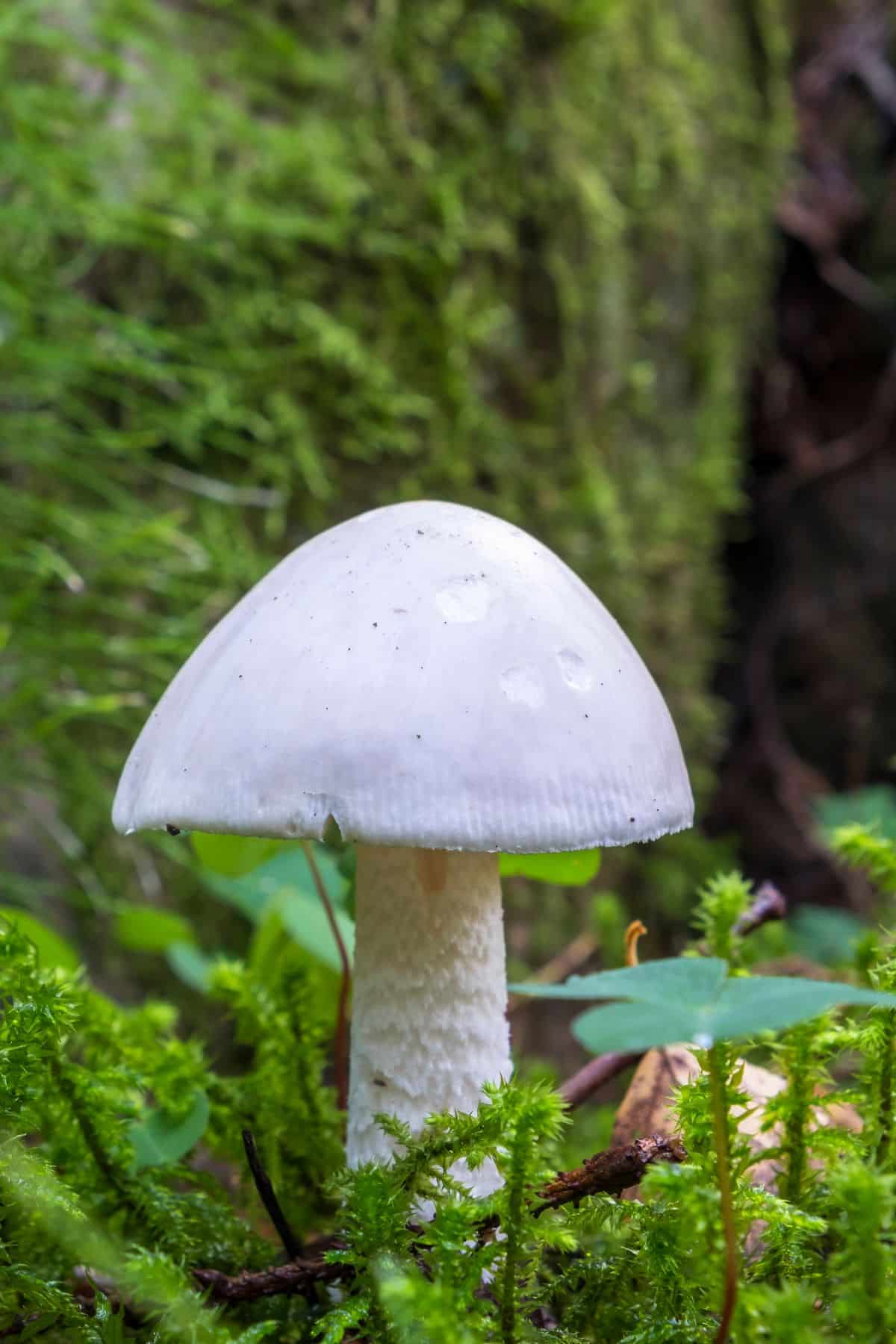
Destroying Angel Lookalikes
Several other mushroom species resemble the destroying angel, but they can be distinguished through careful observation. Some of these lookalikes and similar species include:
Meadow Mushroom (Agaricus campestris)
The meadow mushroom has pink gills that turn brown, a brown spore print, and lacks a cup-like white sac around the bottom of the stem. Unlike the angel of death, it is edible and commonly found in grassy areas. It causes confusion because, from above, it looks similar with a white or cream-colored cap and has a white skirt around the upper stem.
Remember to check under the soil to see if there is a white sac – this will tell you whether it is a meadow mushroom or destroying angel. Also, the gills are different, as is the spore print, so if ever in doubt, do a spore print.
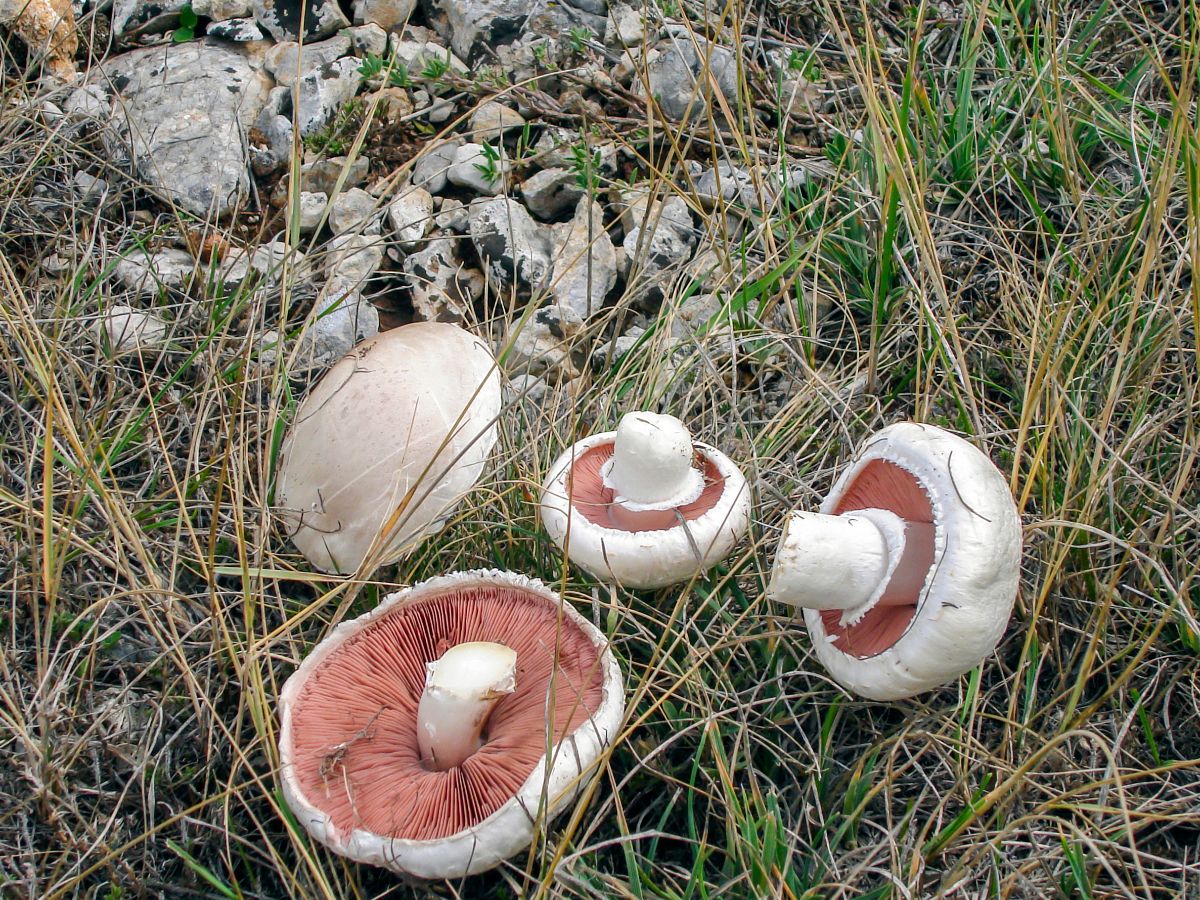
Horse Mushroom (Agaricus silvicola)
Like the meadow mushroom, the white-capped Horse mushroom species can be confused with this deadly species. In addition to a white cap, it also has a white stem and white skirt around the stem. However, it does not have an egg-like sac at the stem base, and it stains yellow when handled. It also has a powerful anise scent, which should quickly educate that it is not a destroying angel.
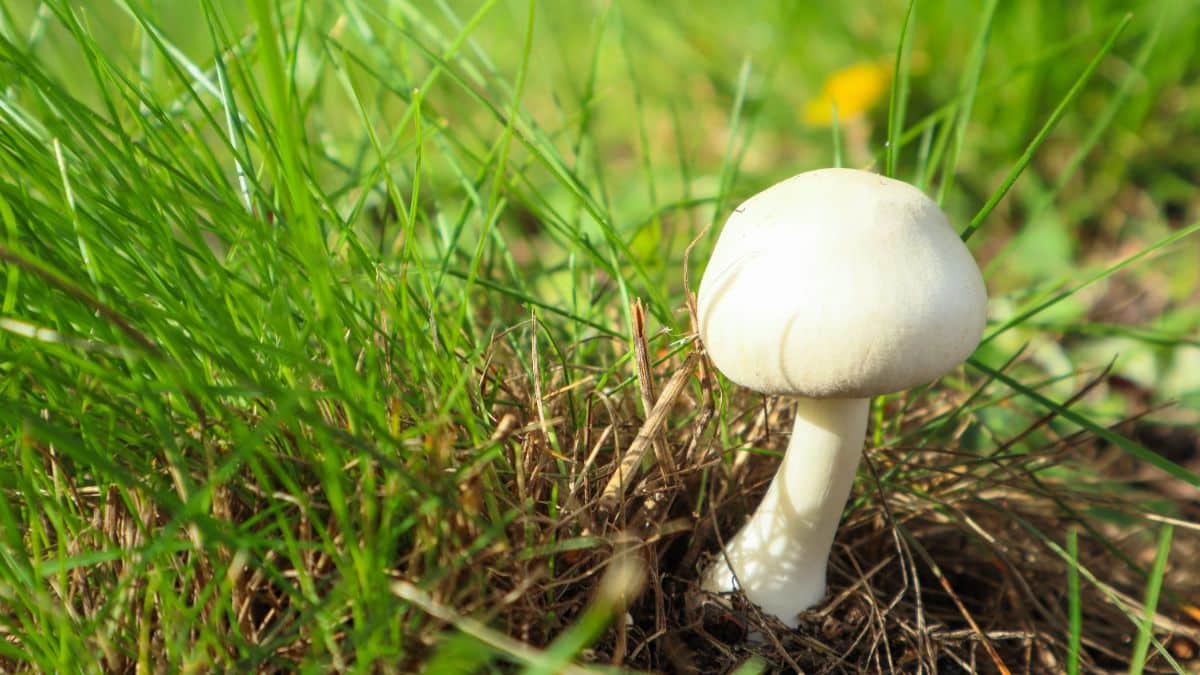
Puffballs (various species)
The puffball and white death cap look similar for a short time, but since puffballs are edible, it can be just enough for someone to make a very dangerous mistake. Puffballs are white and rounded, just like Amanita egg volvas. If you collect puffballs for the table, remember to ALWAYS cut them open to check there are no gills or stems starting to form inside. Any sign of growth inside means it is not a puffball. A puffball will be smooth and white inside.
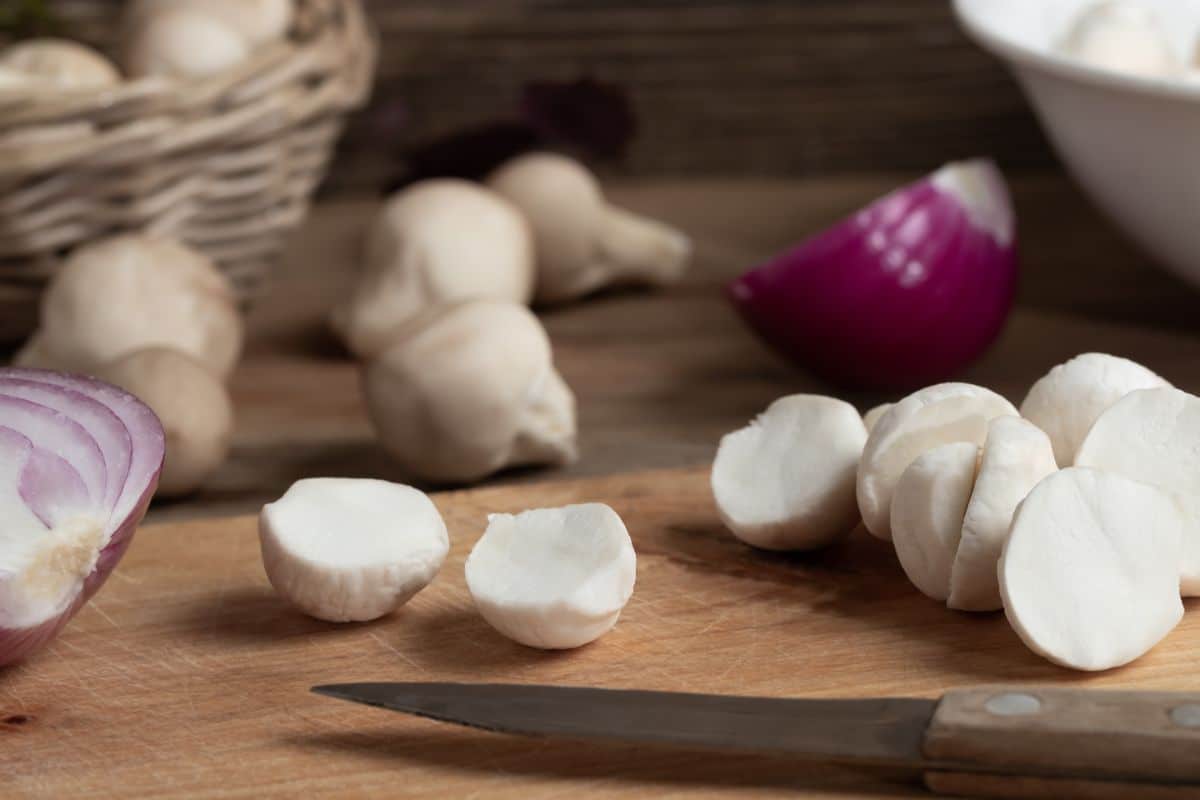
White Dapperling (Leucoagaricus leucothites)
This edible mushroom also has a white cap, white gills, a white stem, and a white skirt around the upper stem. The primary difference is the base of the stem. The white dapperling’s stem is clublike but is not covered by a partial volva egg-sac.
The white dapperling also primarily grows in suburban and urban areas, around parks and gardens. If you intend to forage this species, make very very sure you are comparing it against the destroying angel as you do not want to make that mistake.

Big Sheath Mushroom (Volvopluteus gloiocephalus)
aka Rose Gilled Grisette and Stubble Rosegill
This species can appear very similar to the destroying angel. However, it lacks a ring, has a pink spore print and pink mature gills, and is usually found growing in gardens, lawns, woodchips, and other urban places. This species is widely distributed in eastern North America.
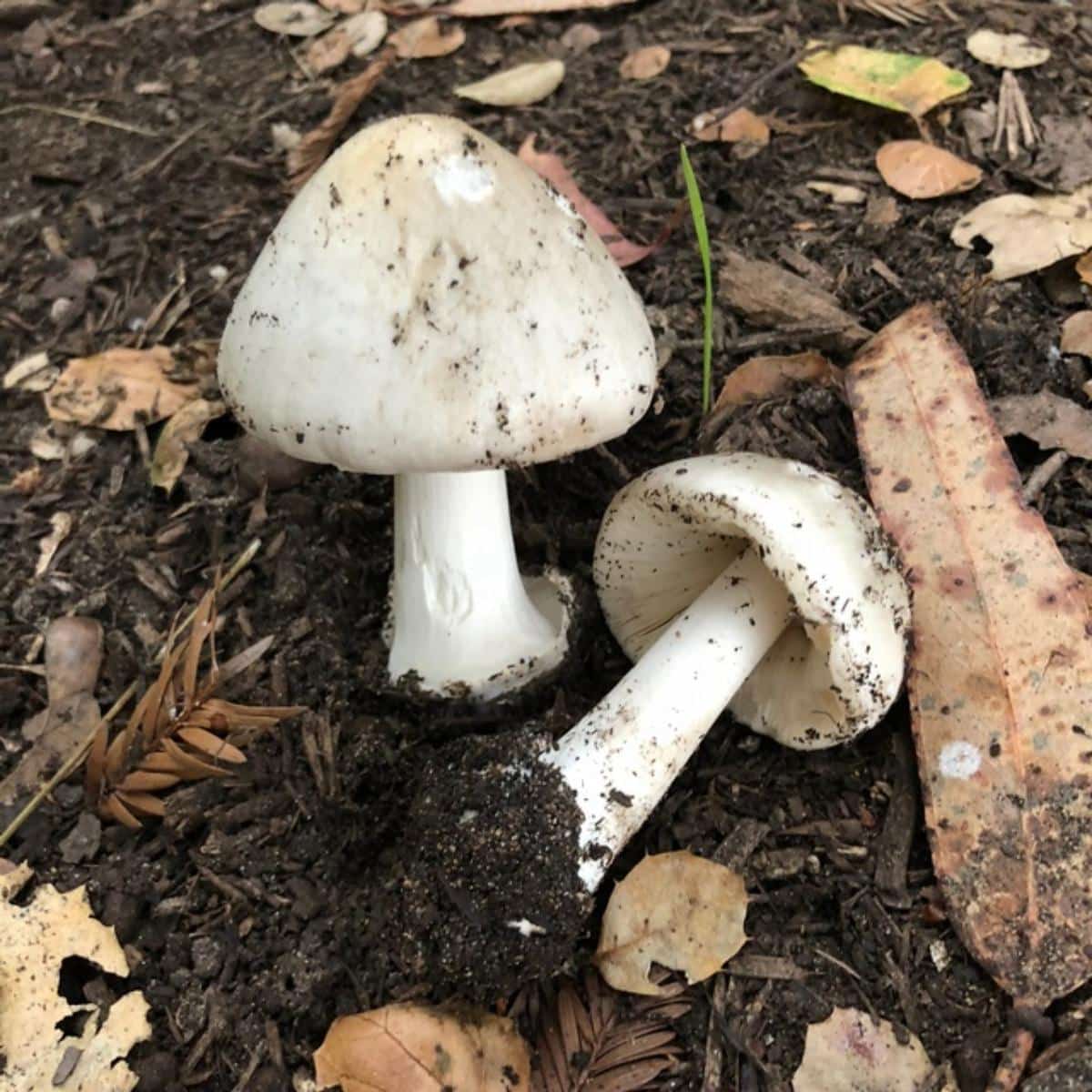
Paddy Straw Mushroom (Volvariella volvacea)
This species has to be mentioned even though it is uncommon in North America. It is not native to N. America, but has hitched a ride with mulch and may show up in gardens, greenhouses, and landscaped areas. This is hugely popular cultivated species in Asia.
It looks alarmingly like the destroying angel. New arrivals to North America from Asia may confuse them (it is a very common mistake) and get ill or die. This species typically fruits in disturbed habitats and has pinkish, free gills. They have a sheath around the base of the stem, much like the destroying angel although it is generally more elongated and brown instead of white. It also does not have ring or skirt around the upper part of the stem.

Pacific Amanita (Amanita calyptroderma)
aka coccora, Coccoli
This Amanita appears in conifer forests along the Pacific Coast from fall through spring. It is an edible species, and when it grows “normal,” it has an orange-brown cap. This easily sets it apart from the destroying angel. However, sometimes the cap is white, and it looks like the twin of the angel of death. If you forage Pacific Amanita, use caution! It is not a mushroom for beginners.

Destroying Angel Toxicity and Warnings
The destroying angel contains deadly toxins called amatoxins. Symptoms of poisoning by this mushroom often do not appear until 6-24 hours after consumption. Initial symptoms include vomiting, diarrhea, and cramps. A period of apparent improvement may follow, but liver and kidney failure can occur, leading to death after four days or more.
One mature destroying angel mushroom is enough to be lethal.
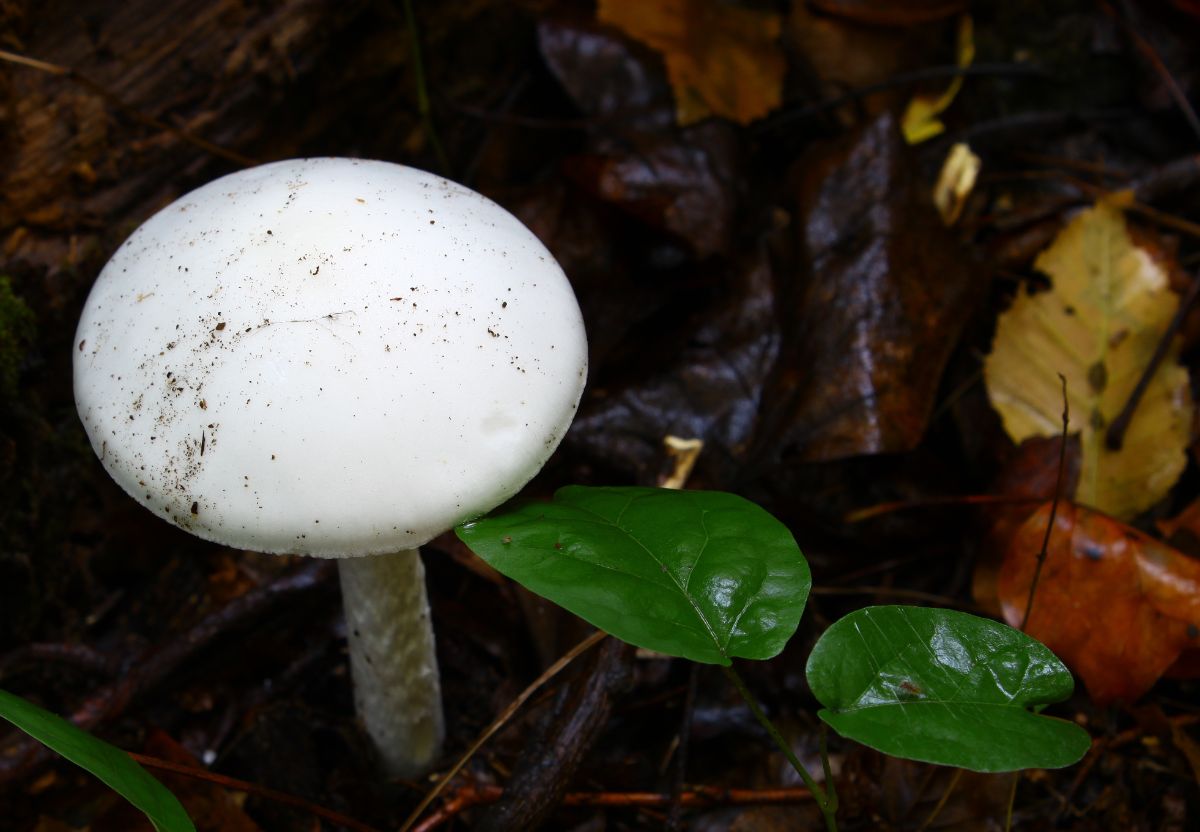
This delayed toxicity is another reason the mushroom is so dangerous. You may not know what it is that is making you sick and, therefore, not seek out or get the appropriate treatment in time. And, that period of improved health is super trickster-like of the destroying angel, deceiving a person into thinking they’re getting better.
The destroying angel is responsible for numerous fatalities and poisonings worldwide. In the United States, occasional news stories report immigrants being poisoned by mushrooms. Sometimes, people mistake the poisonous fungi of North America for similar-looking but edible ones from their home lands. The destroying angel is one of the main culprits in these mistaken identities.

Destroying Angel Common Questions
Is there a cure for destroying angel?
There is no antidote to cure eating the destroying angel. In most cases, if the symptoms and cause are caught soon enough, they can be treated. The mushroom causes severe, irreversible damage to vital organs. Hospital treatment is necessary and may include procedures like dialysis and liver transplant.
Are death cap and destroying angel the same?
No, they are two different species. However, they are in the same family of mushrooms. These two deadly mushrooms look quite different. The death cap has a yellowish to brownish cap while the destroying angel is all white. For more information on death caps, visit our article here.
Is it safe to touch destroying angel mushroom?
Touching a destroying angel is fine. You are not going to absorb the toxins through skin contact — it must be consumed to be problematic. That being said, it is always best to exercise caution and if you can, wash your hands. And, keep kids away from these mushrooms in case they’re drawn to putting them in their mouth.
Is destroying angel mushroom toxic to dogs and cats?
Yes! It causes liver and kidney damage and is often fatal for dogs and cats. If caught early enough, the symptoms may be managed.

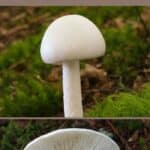
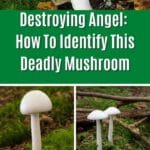
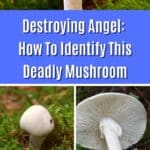
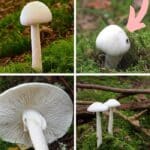




Pen Godber says
I thought I knew the destroying angel pretty well. One appeared on our track looking all white and innocent. We exposed the volva to confirm our identification and just watched it develop. It just looked more and more like it’s usual bad boy self. After three or more days the cap is no longer white, it’s biscuity and the gills are chestnut brown. If I had come to it at this stage I might easily have taken it for a mature agaricus. The field 100 yards away is where I have been collecting various species of agaricus for thirty years. I feel a lot less smug[y confident that’s for sure.
Hannele Halm says
Can a small white mushroom growing in my flower pot be Death Cap?
Thanks!
Jenny says
Maybe…compare to the guide on death caps https://www.mushroom-appreciation.com/death-cap.html
Ayuma Nahara says
Jenny, I began mushroom exploration last year. Some reading, joining with a friend for morel hunting, and finding and eating a mushroom that looked much like a portabella but slightly purple gave me more confidence to explore wild food.
I came across some Meadow Mushrooms the other day and instinctively picked them. They tasted great when cooked but I noticed a yellow stain on them before cooking. I ate two small bites and didn’t eat the rest. Reading about the Destroying Angel got me on high alert! But I am more confident in identifying these two species because of what you shared and from Plant Snap. Your blog is the best resource I have found. Thank you for sharing this knowledge.
Jenny says
Thank you! And I think you made an excellent choice not to eat them. Yellow staining makes me think https://www.mushroom-appreciation.com/yellow-stainer-mushroom.html.
Rich says
I had a run in with the angel of death once. Cut a mature cap and mixed in a salad. 30 min. after consumption I had vomiting and diarrhea, getting worse as the minutes ticked away. My brother found me in my bedroom and called the ambulance. I was in I.C.U. 4 days with 3 in a general hospital room. Given NO medication except I.V. fluids. I was ignorant, these plants are nothing to fool with!
Jenny says
Oh my god! Thank goodness your brother was there and got you to the hospital. You are a very lucky person! That is a rough lesson to learn — these mushrooms don’t mess around. Glad you are well now and hope it didn’t turn you away from foraging forever — you’ll be a great hunter now that you understand the importance of 100% accuracy in identification.